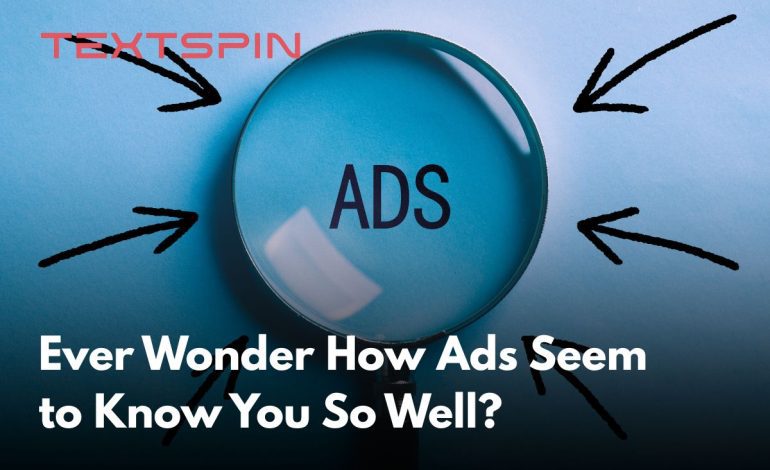
Ever Wonder How Ads Seem to Know You So Well?
Quick confession: online ads do not have psychic powers
If you have ever scrolled Instagram at midnight and felt personally attacked by an ad for the exact brand of comfy socks you planned to Google the next day, you probably wondered whether your phone was eavesdropping. Good news: it is (mostly) not. The real magician is data, tons of it, collected from taps, swipes, wish lists, and half-filled carts. Brands turn that data into eerily spot-on recommendations designed to make shopping feel effortless and, well, a little addictive. Let’s pull back the curtain on how the ad machine figures you out, why small businesses now play the same game as the tech giants, and how you can get the perks without handing over your entire digital soul.
Friendly stalkers: where all that data actually comes from
1. Cookies that travel with you
Those pop-ups asking to “enhance your browsing experience” are not just polite. Tiny text files, or cookies, hitch a ride in your browser, tracking which pages you visit and for how long. Clear them once and you will notice sites suddenly look empty, like they forgot who you are.
2. Loyalty programs that remember your cravings
Scan a coffee shop app ten times, get one free latte, and in exchange the shop learns your caffeine schedule down to the minute. Not creepy, just caffeinated.
3. Social media likes and follows
Every heart you tap teaches the algorithm a new synonym for “I want this.” Combine that with the hashtags you check and the accounts you stalk and voilà, your feed morphs into a curated mall.
4. Location pings on mobile devices
Opt in to location services and you broadcast where you jog, brunch, and buy groceries. Retailers love that because they can flash deals the moment you pass their doorway, no crystal ball required.
5. Purchase history everywhere
Every online order, split payment, or digital receipt becomes part of a profile that predicts what you will buy next. Amazon’s “Buy It Again” button is just purchase déjà vu powered by statistics.
Why small businesses jumped on the personalization train
A decade ago, bespoke recommendations were a big-budget perk for mega brands. Fast-forward to 2025 and a family-run bakery in Toronto can rent the same tech stack for the price of a secondhand mixer. Cloud-based customer-data platforms, plug-and-play email tools, and affordable ad targeting make it possible to act big without the corporate bloat.
- Example: That neighborhood plant shop that emails you a discount every time your monstera looks thirsty? They plug simple “plant health” triggers into a mailing app and watch repeat sales bloom.
- Example: A niche skincare startup uses Shopify’s built-in analytics to learn when customers run out of serum and drops a reminder in the inbox before bottles hit empty.
The big insight: personal touches make small brands look polished, and polished brands feel trustworthy. Shoppers reward that trust with loyalty, word-of-mouth buzz, and cart totals that keep accountants smiling.
The upside for you: beyond just fewer random ads
- Less scrolling, more finding: Algorithms sift the internet clutter so you do not have to.
- Deals that matter: Instead of generic coupon blasts, you get birthday discounts, first-dibs sales, or “we saw you eyeing this” price drops.
- Tailored discovery: Hyper-niche brands surface products you did not know existed, from cruelty-free glitter to ergonomic desk toys, making your weirdest interests feel mainstream.
- Relationship vibes: When a store calls you by name and predicts your taste, it feels like the cool barista who memorizes your order but automated.
The trade-off nobody loves to talk about
Personalization is convenient, but it runs on a currency called privacy. Every benefit stacks on top of data you sacrifice, sometimes without realizing how deep the rabbit hole goes. Here are the big gotchas:
- Dynamic pricing: Prices can change depending on your browsing habits, zip code, or even the phone you use (yes, premium devices sometimes see higher numbers).
- Echo chambers: Algorithms feed you more of what you already like, shrinking your chance to stumble on fresh ideas outside your bubble.
- Digital breadcrumbs forever: Deleting an account rarely erases data. It lingers in backups, spreadsheets, and third-party brokers you have never met.
- Security risks: More data stored means juicier targets for hackers. One breach can leak everything from your shoe size to your social security number.
Who actually regulates this circus?
Canadian law is tightening with the Consumer Privacy Protection Act, and some U.S. states push similar bills. Europe’s GDPR makes headlines for huge fines, but enforcement gaps still exist. Bottom line: regulations trail innovation. Until rules catch up, brands lean on self-policing and “promise we will keep your data safe” language that requires a law degree to decode.
How to snag the good stuff and dodge the creepy feels
- Audit your apps: Check which ones always track location and flip the permission switch to “While Using” or “Never” for the clingier ones.
- Rotate email addresses: Use separate inboxes for shopping, newsletters, and financial accounts. It scrambles tracking pixels and keeps spam manageable.
- Limit third-party sign-ins: Clicking “Continue with Facebook” is fast, but remember you let two companies share your data dance floor instead of one.
- Tweak ad settings: Google and Facebook let you edit interest categories. Purge ones that feel stale or flat-out wrong to reset the algorithm.
- Support transparent brands: Reward companies that publish clear privacy pages and give easy opt-outs. Your wallet is the loudest feedback loop.
The future: voice shopping, smart fridges, and AI besties
Voice assistants are gearing up to place grocery orders before you notice the fridge is empty. Smart mirrors might suggest outfits based on your calendar. Even your car plans to upsell you coffee on the way to work. All that sounds handy, but it also means sensors hoovering new layers of personal info, from tone of voice to driving habits and fridge raids at 2 a.m.
Imagine an AI chat companion that predicts your mood swings, nudging you toward meditation videos or comfort-food recipes. Great for mental health, sure, but also gold for advertisers eager to sell you scented candles. As always, the question is not whether the tech can predict your life, it is whether you are okay letting it.
Final takeaway
Ads feel psychic because brands combine small pieces of your digital life into one surprisingly accurate puzzle. Sometimes that puzzle makes daily chores smoother and turns shopping into a treasure hunt. Sometimes it oversteps, selling your secrets to the highest bidder. Staying informed, tweaking your privacy knobs, and choosing brands that respect boundaries lets you enjoy the upside without surrendering your entire identity.
So the next time an ad nails your taste in seasonal boots, decide whether you want to thank the algorithm or ghost it. Either way, you and your data are running the show.





